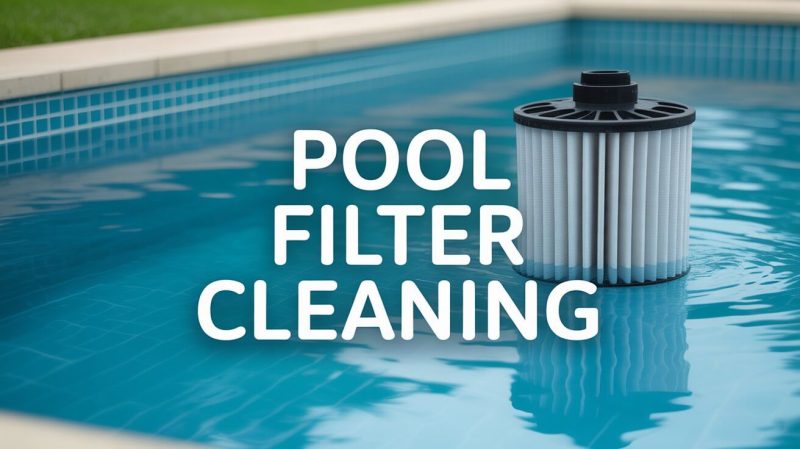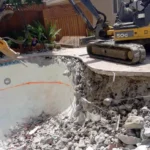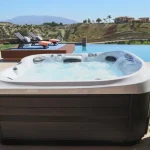A clean pool is the heart of every relaxing summer. Yet, behind the sparkle lies an often-overlooked task: pool filter cleaning. Many pool owners delay it because it seems complicated, but with the right knowledge, pool filter cleaning is actually simple, effective, and hassle-free. In this guide, you’ll discover why clean filters matter, how often to maintain them, and the best techniques experts recommend.
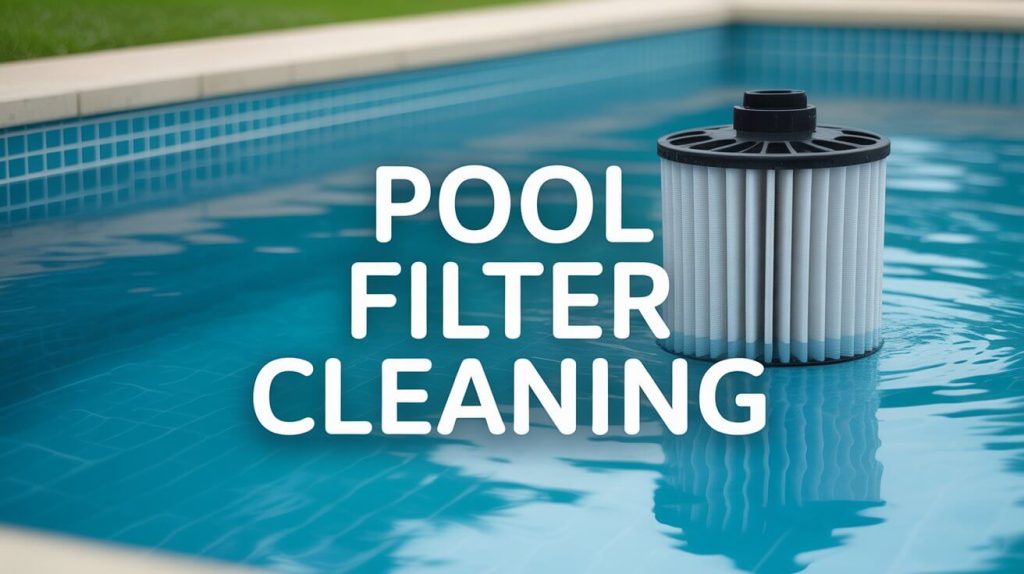
Content
Why Pool Filters Matter More Than You Think
A pool filter works like the lungs of your pool, keeping the water clean by removing dirt, debris, sunscreen oils, and fine particles. Regular pool filter cleaning is essential because, according to the Centers for Disease Control and Prevention (CDC), clean water lowers the risk of waterborne illnesses. Without proper pool filter cleaning, filters clog, the pump works harder, and energy is wasted. Studies even show that skipping pool filter cleaning can reduce circulation by up to 70%, causing cloudy water and higher chemical costs. That’s why pool filter cleaning is more than just appearance—it safeguards health and saves money.
How Often Should You Clean a Pool Filter?
The right frequency depends on the type of filter and pool usage. On average:
- Cartridge filters: Every 2–6 weeks, and deep cleaning 2–3 times per season.
- Sand filters: Backwash every 4–6 weeks, with sand replacement every 3–5 years.
- Diatomaceous Earth (DE) filters: Backwash every 4–6 weeks, with a full clean at least once per year.
If your pool sees heavy use—like summer parties or kids swimming daily—filters will need cleaning more often.
Best Way to Clean Cartridge Pool Filters
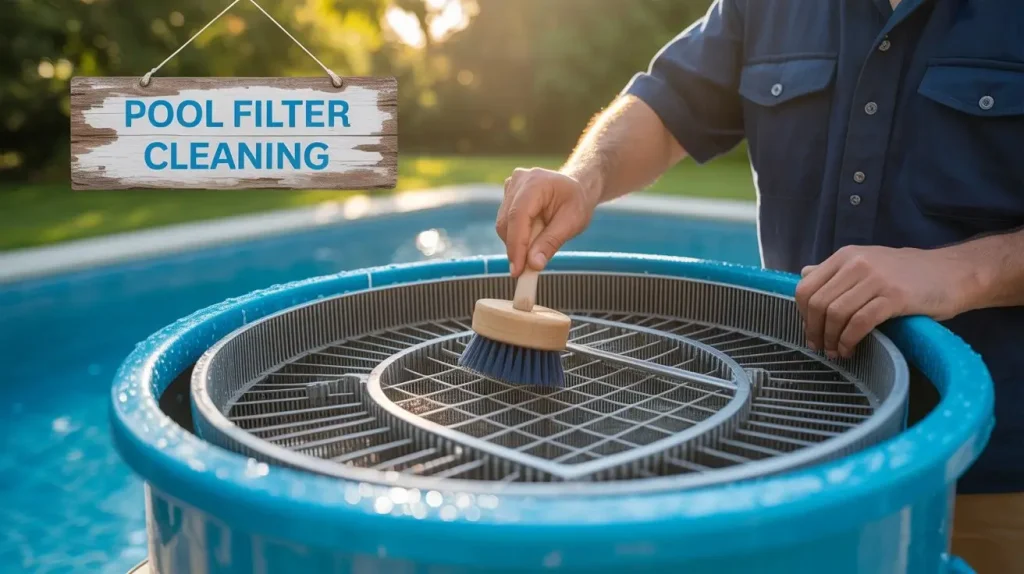
Cartridge filters are common in home pools. They are efficient but collect dirt quickly. Here’s a simple cleaning routine:
- Turn off the pool pump.
- Remove the cartridge carefully.
- Hose down the pleats with medium pressure, starting at the top and working down.
- For stubborn dirt, soak the cartridge overnight in a filter cleaning solution.
- Rinse thoroughly before reinstalling.
Pro tip: Always allow cartridges to dry completely before placing them back in the filter housing. This helps extend their lifespan.
Best Method to Clean Sand Pool Filters
Sand filters trap particles in layers of fine sand. Over time, debris builds up and clogs the spaces between grains. Backwashing is the solution.
- Turn the filter valve to Backwash mode.
- Run the pump until water in the sight glass looks clear (usually 2–3 minutes).
- Rinse the sand bed to settle particles.
- Reset to Filter mode.
Sand filters generally last about five years before the sand needs replacing. Using professional-grade pool filter sand ensures maximum efficiency.
How to Maintain DE Pool Filters Easily
Diatomaceous Earth (DE) filters are known for their superior filtration, capturing particles as small as 2–5 microns. Cleaning them is more detailed but still manageable:
- Backwash the filter like a sand filter.
- Open the tank and rinse out old DE powder.
- Add fresh DE powder through the skimmer while the pump is running.
Experts recommend a full disassembly and cleaning once a year. Although DE filters take more work, they provide crystal-clear water unmatched by other systems.
Signs Your Pool Filter Needs Immediate Cleaning
Don’t wait until the water looks cloudy. Watch for these red flags:
- The pressure gauge rises 8–10 psi above normal.
- Water jets feel weak.
- The pool looks cloudy even after chemical treatment.
- The filter housing makes unusual noises.
Spotting these signs early helps you avoid expensive damage and extend your system’s life, saving money on major repairs and keeping everything running smoothly.
Eco-Friendly Tips for Pool Filter Cleaning
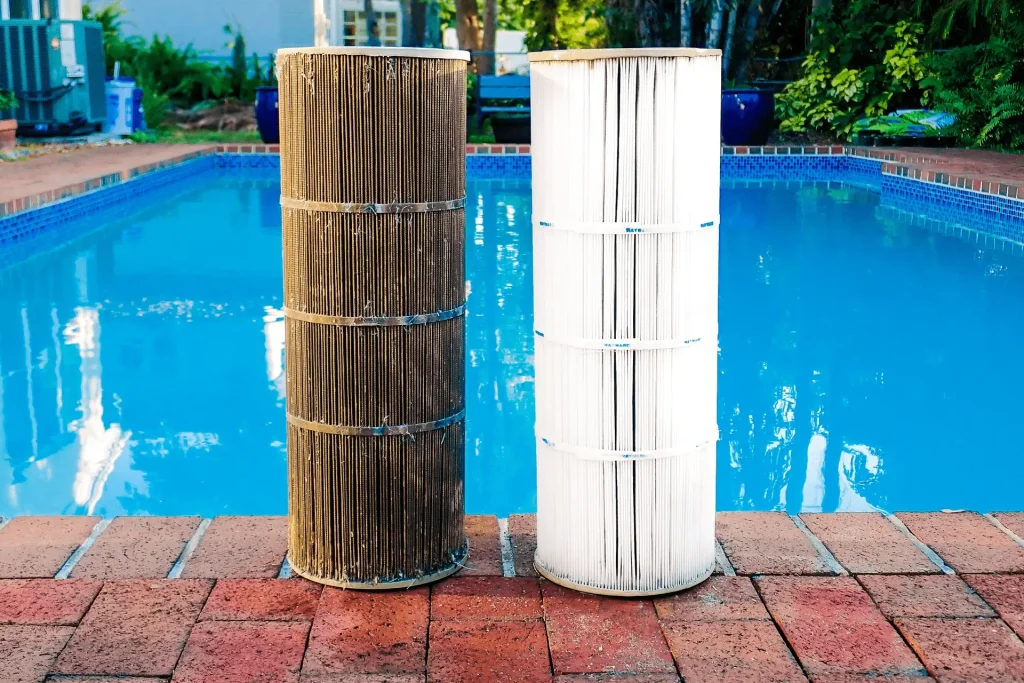
Sustainability matters. Instead of harsh chemicals, consider:
- Vinegar solutions for removing mineral buildup.
- Baking soda paste for scrubbing filter housings.
- Biodegradable cleaners available in pool stores.
These methods are safer for the environment and still effective at keeping filters in top condition.
Professional vs. DIY: Which Is Right for You?
While DIY cleaning saves money, professional servicing offers unique benefits. A pool technician can detect early signs of wear and replace parts before they break down. For busy homeowners, scheduling a yearly service ensures peace of mind. Still, when it comes to maintenance after pool renovation or routine upkeep, a garden hose and a little time are often all you need.
Conclusion:
Pool filter cleaning doesn’t have to feel overwhelming. With routine maintenance, the right tools, and eco-friendly methods, pool filter cleaning becomes simple and effective. Regular pool filter cleaning not only keeps your water sparkling and inviting but also protects your health, reduces chemical costs, and extends the life of your equipment. In the end, the real secret to hassle-free pool filter cleaning is consistency—just a little effort each week ensures a crystal-clear pool all season long.
FAQs About Pool filter cleaning:
What is the best way to clean pool filters?
Best way: Hose off cartridge, backwash sand, or clean DE grids & add powder. Regular maintenance after pool renovation keeps water clear & filters lasting.
How much should it cost to clean a pool filter?
Pool filter cleaning costs $60–$120 professionally, with DE or sand costing more. DIY with a hose is nearly free, just water and supplies.
How to clean a filter on a pool pump?
Turn off pump, release pressure, open lid, remove basket, clear debris, rinse with hose, place back, secure lid, and restart pump for smooth operation.
How to manually clean a pool filter?
Manually clean by hosing cartridges, rinsing DE grids & adding powder, or flushing/replacing sand every 3–5 years to keep filters working efficiently.

Viola Moore is a dedicated home improvement blog author who has a passion for writing. She enjoys blogging about all sorts of topics, from interior design to landscaping and more! She loves the outdoors and spending time in nature with her family. She also likes to bake in her free time.

